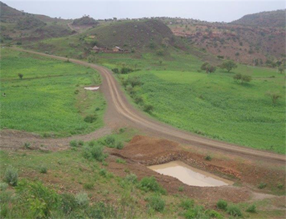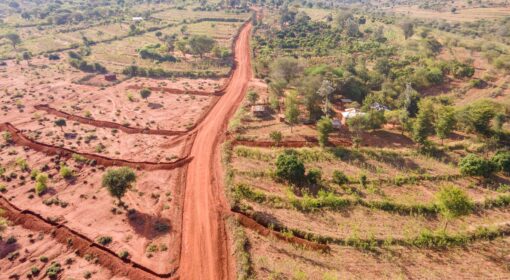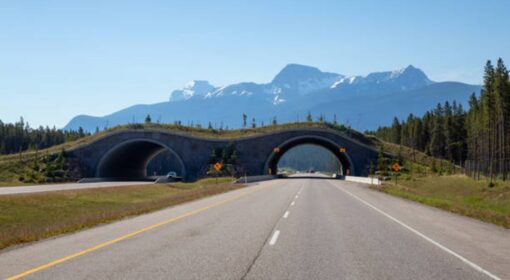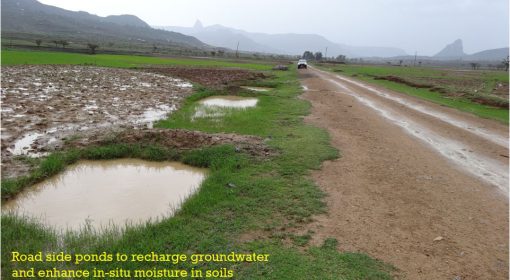by Michael Maluki, Nancy Kadenyi and Faith Muchemi
Introduction
Entering Makueni county welcomes you to endless vast lands covered by canopies of species of acacia, Terminalia brownii (Terminalia), Croton megalacarpus, euphobia, Grevillia robusta, and jacaranda trees. Makueni is one of the 80% Arid and semi-arid counties of the beautiful Savannahs in Kenya. Talking to residents around, you get an expressive view of how livelihoods have changed due to climate change such as the current severe drought which is expected to become more frequent and extreme. The villages are deserted, many rivers have dried up, it is smoky and dusty, and large areas face land degradation. “This has been the situation for the past few years, our crops have withered up, look at the peas in our farms, only sticks have been left, by the time the cropping season comes to an end we expect no harvests, we call this road Kamba-Nduu Ndane , it means a brown squirrel because of the physical properties of the soil in the area.’’ Says one of the residents in Nduu Ndane area.
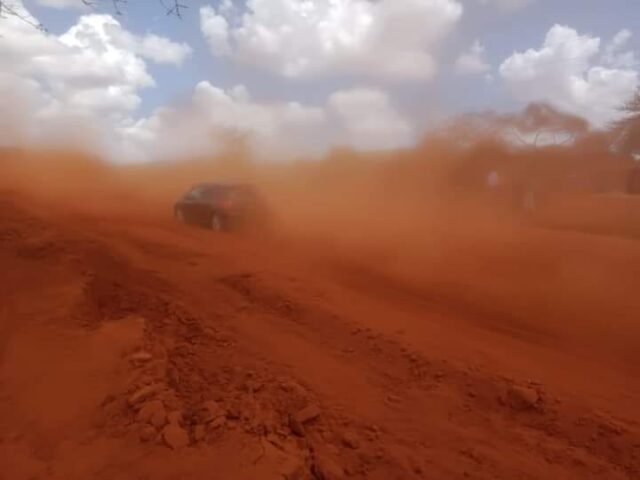
The Green Roads for Water Justification
Roads and water are generally seen as enemies, with water responsible for most of the damage to roads, and roads being a major cause of problems such as erosion, waterlogging, flooding, and dust storms. This tension, however, can be reversed. The concept of Green Roads for Water places roads in the service of water and landscape management and climate resilience without sacrificing or diminishing their transport functions. With global investment in roads, plus maintenance costs, the widespread adoption of Green Roads approaches can leverage investment at a transformative scale, making road development and maintenance a vital tool for achieving climate resilience, water security, and productive use of natural resources.
Green Roads for Water in Makueni
Since 2013 Makueni county has taken up the initiative to share with its community ideas on water harvesting, storage and distribution as an effort to beat their water scarcity challenges and low agricultural productivity. Despite these investments, the county is still challenged by inadequate water supply, long distances to water points, inadequate distribution structures of the available water, drying of most of rivers, and low community involvement and participation in environmental management because of low environmental awareness and information dissemination programmes (Government of Makueni County, 2022).
In 2016 under the Green, Roads for water project, a few officials of Makueni County had an opportunity to benchmark Green Roads activities in Ethiopia and this has elevated their efforts in promoting the activities in Makueni as well. Makueni county has majorly invested in road water harvesting and community sensitization on run off harvesting and has incorporated the approach in their county plans. Cut offs and mitres drains were done in large numbers in the county along side other interventions such as culverts for drainage and Road runoff harvesting-Meters , Non-Vented Drifts and Bio- Gully rehabilitations.
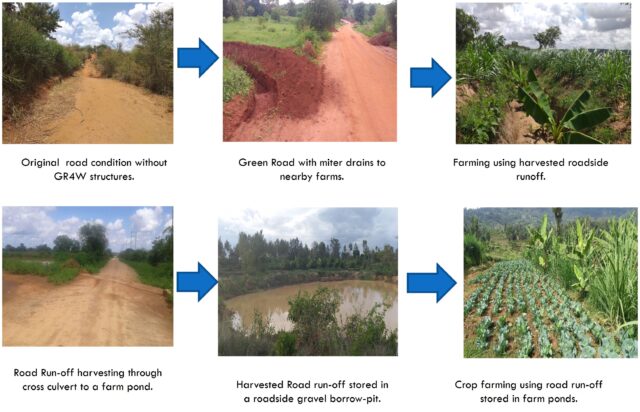
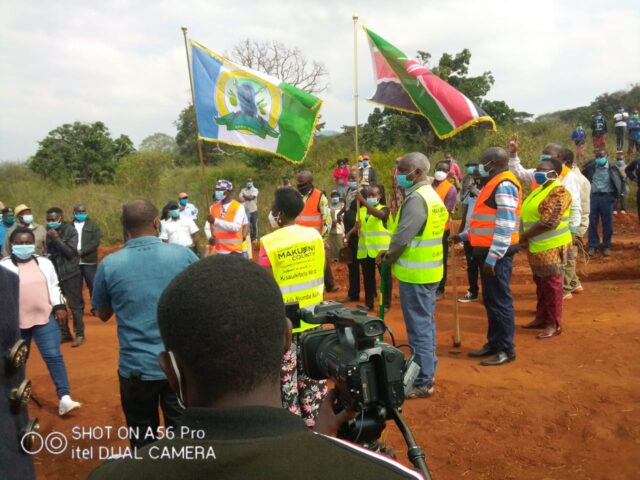

The Green Roads for Water activities have been adopted in some parts of the County and the once dusty crusty looking roads are now a haven tranquility of greenness, a breath of fresh air swirls around the space, life is back in the deserted areas. A closer look at the Mbooni hills from a distance reflects well terraced landscapes with strong banana, mango, and orange trees firmly rooted into the ground. The farmers and communities around look optimistic, they appreciate the effort that the County government has taken into stabilizing their livelihoods and improving their microclimate and livelihoods through road run off harvesting.
Road run off harvesting is one of the ways forward to combat the challenges of limited water for agriculture. Follow this link for more pictorial information on GR4W in Makueni County. Also, videos from different platforms where farmers are urged to tap road runoff for small irrigation can be found below:
Stories from some of the GR4W beneficiaries
“I am very grateful to God for this opportunity to host visitors in farm where we do road run off harvesting. We started harvesting road run off in 2015 through a trench from the road to the on-farm pond. The harvested water is able to take us through a year or to the rainy season. Through this, we have been able to venture into irrigation and growing of French beans for the export market.” – Gladys Manyila
“I am happy and pleased with this project of diverting road run off from Roads to the farm. Since 2017, the project has been of great beneficial benefit to me . I have been able to grow bananas in my farm and grow more mangoes that even now are flowering off season due to continuous water availability. We are grateful to the County Government of Makueni an dour Eng. Michael Maluki for these interventions”. – Wicklife Ndolo Muema
Makueni County GR4W next Plans
Makueni county intends to apply GR4W in all the sub counties within the county. This effort is seen in the 2023-2027 CIDP under various departments such as Transport, Infrastructure, Public Works,Housing and Energy. The program shall be implemented with the following approaches: Cut-off mitre drains (Roadside drains), Cross-drains (Diversion from cross culverts), Murram/ quarry borrow pits, Gabions and NBS check dams (Gully rehabilitation, Prevention and Reclamation), Non-vented river drifts/road crossings, Roadside tree planting for environmental mitigation and Farm ponds/pans.This initiative presents an easy method for locally-led climate action that can be adopted and upscaled in different locations. It works well for drought sensitive ASAL areas, mainly because:
- The community can do it by itself at a low cost
- Great Impact on both degraded and agricultural landscapes
- The proposed activities are gender-sensitive and inclusive where anyone can take part and adopt.
- It is a win-win i.e. better roads, improved agricultural productivity, enhanced water availability for livestock, landscape restoration, etc.
- Roads are spread throughout many areas making it easy to apply this technique in relatively remote areas as well
- The mitre drains used to harvest run off can be utilized in different ways such home gardens. For example, they can support:
- Inside the terraces for production of bananas and vegetables such as amaranth, kales and spinach
- Top of the terraces to reduce soil erosion- sisal, pasture, pigeon peas and beans
- In between the mitre drains-fruits e.g. oranges, mangoes, avocados, etc. and crops e.g. maize, beans and pigeon peas

References
Government of Makueni County. (2022). COUNTY INTEGRATED DEVELOPMENT PLAN 2023-2027. December, 1–46.
Maguta, J. K., Nzengya, D. M., Mutisya, C., & Wairimu, J. (2021). Building Capacity to Cope with Climate Change-Induced Resource-Based Conflicts Among Grassroots Communities in Kenya. African Handbook of Climate Change Adaptation, 2611–2630. https://doi.org/10.1007/978-3-030-45106-6_131
Musyi FM. (2021). Smocky Dusty Road in Emali-Ukia Road at Nduu Ndane. https://www.facebook.com/MusyiFM/photos/a.969342003139303/6681726135234166/?paipv=0&eav=AfZfzBpuzXfvMu4d2OeCqVzW1KS7VYv9RaH-gqSx0GBiJhnHKOyMm_wGGlsPhyR4wYA&_rdr
